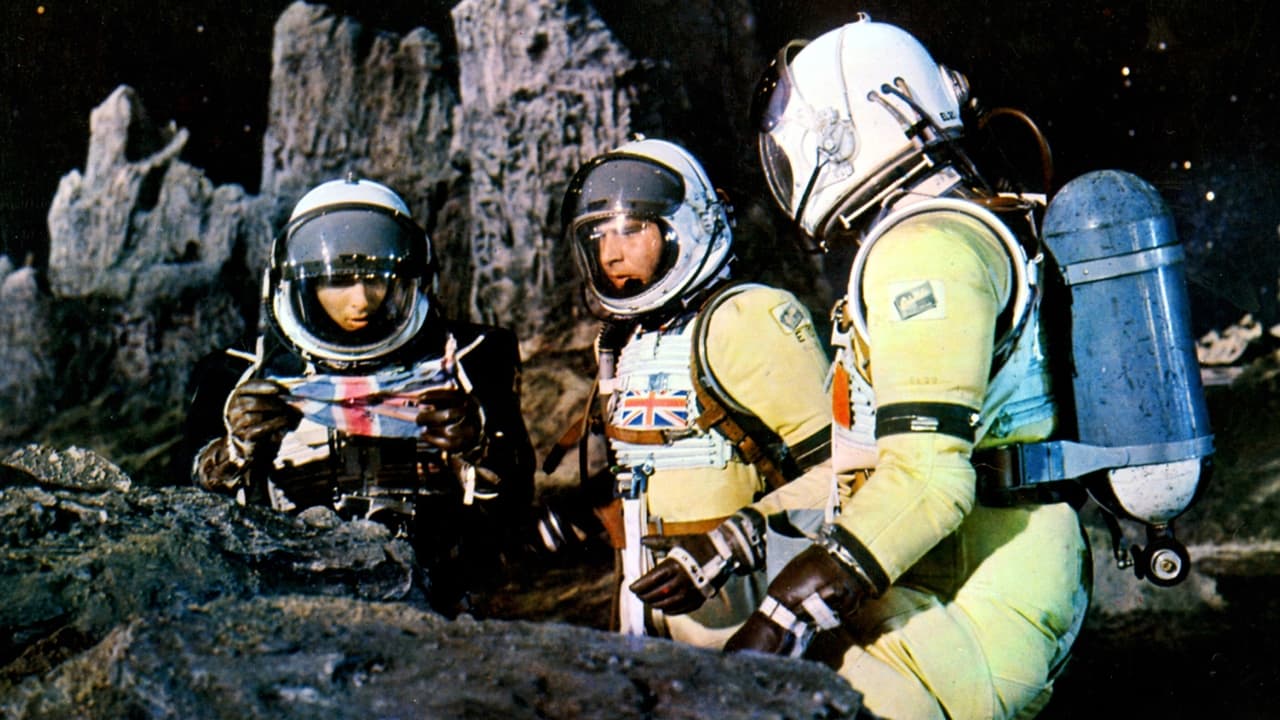ChicRawIdol
A brilliant film that helped define a genre
Senteur
As somebody who had not heard any of this before, it became a curious phenomenon to sit and watch a film and slowly have the realities begin to click into place.
Frances Chung
Through painfully honest and emotional moments, the movie becomes irresistibly relatable
Darin
One of the film's great tricks is that, for a time, you think it will go down a rabbit hole of unrealistic glorification.
jvance-566-20403
This adaptation of HG Wells work tries hard but never quite clicks. The actors are very good (Lionel Jeffries is a real hoot)but the lines they're given don't seem to shine with any profundity or emotion, they're just going through the motions.The science is what it is. Though vastly more accurate than Wells' depiction, it was outdated even in 1964. I was just a 10 year old proto-nerd when it came out but I knew better than to buy it.But it is Harryhausen's contribution that makes this worth your time. Of course the Dynamation pales in comparison to modern CGI. I'm sure kids would see it as laughable. But for those of us who grew up watching schlocky sci-fi in the 50s and 60s that were filled with poor quality special effects it is simply magnificent.
BA_Harrison
Struggling entrepreneur Arnold Bedford (Edward Judd) invests in the latest invention by crackpot scientist Joseph Cavor (Lionel Jeffries): Cavorite, a substance that defies gravity. In order to test their product, the pair embark on a trip to the moon in a metal sphere, accompanied by Arnold's unwilling fiancé Kate Callendar (Martha Hyer). Once on the moon, the trio run into trouble with a race of technologically advanced bug-eyed creatures that Cavor calls Selenites.First Men In The Moon is an entertaining sci-fi yarn boasting great performances, solid direction from Nathan Juran, and some impressive visual effects (for the day), including a couple of nice Ray Harryhausen Dynamation creatures; but what I like best about the film is that it sticks steadfastly to H.G. Wells fanciful scientific invention, no matter how absurd it all gets. If the book was to be adapted for the screen these days, I have no doubt that much of the content would be drastically altered to make it seem more plausible, but in the process, Wells' story would be robbed of its innocent Victorian futurism charm.In Juran's 1964 movie, it's all intact: the crazy sphere with blinds coated in Cavorite, the massive caterpillar-like moon cows (sadly, not a thing, as we have since discovered), the weird and wonderful lunar vegetation, and the intelligent insectivorous beings (mostly realised via men in unconvincing rubber suits) who must create their own oxygen to breathe (which leaves one wondering how they evolved). The script, by Nigel Kneale, also throws in the silly idea of using deep sea diving suits as space attire, plus a near miss (of about 90 million miles) with the sun.It's all extremely daft, but therein lies the fun.
Prichards12345
FMITM can't be compared to Ray Harryhausen's best films like Jason And The Argonauts or Mysterious Island, but this version of H.G. Wells' ingenious novel, while simplifying much of the story, is an engaging little sci-fi fantasy in the main: the sort of fantasy movie they used to make before Star Wars came out! It concerns, of course, Lionel Jeffries' eccentric Professor Cavor and his anti-gravity substance Cavorite. Falling in with Edward Judd's rascally Bedford and his accidentally along for the ride fiancée Kate (Martha Hyer), Cavor undertakes a trip to the moon, discovering an alien race of insects named The Selenites, who seem to behave perfectly reasonably towards the invaders considering numbers of them are pushed into caverns or shot!Indeed, the irony of this is surely unintended: we are meant to look upon the intrepid adventurers as heroes! Most of the time the Selenites are played by child actors in insect costumes, slightly reminiscent of screen-writer Nigel Kneale's Martians from Quatermass; however the leader-insects are superbly rendered by Harryhausen's stop-motion genius.In truth, the performances of the actors are irritating, particularly - and surprisingly given his talent - Jeffries. But the movie looks good, provides Disney-style entertainment, and never outstays it's welcome. It's a good family movie, with enough cheese to cover the surface of the moon!
Neil Welch
Once Ray Harryhausen hit his stride with Seventh Voyage of Sinbad, he practically never looked back. First Men In The Moon was a bit of a hiccup.It's not an unsuccessful movie as such, but it's not terribly successful as a vehicle for Harryhausen's particular artistry, and this is because there isn't a great deal of opportunity for the type of effects sequence in which he specialised.It is an adaptation of HG Wells' story about an eccentric inventor who invents an anti-gravity substance which he paints on a sphere which becomes the vehicle for his moon trip, framed with a non-Wells (then-)contemporary sequence. Lionel Jeffries plays inventor Cavor very well: it is not his fault that the character, as written, is profoundly irritating. Edward Judd has more luck (but not much) as impetuous everyman Bedford, and Martha Hyer is called upon to stay there where it's safe a lot.Set design is terrific, physical effects are fine, but Harryhausen's work seems a little lacklustre, perhaps due to the technical difficulties encountered in readying effects for the widescreen format used: there are even moments when you notice sub-par registration of different elements in an effects shot.Not a failure, but not wonderful either.

